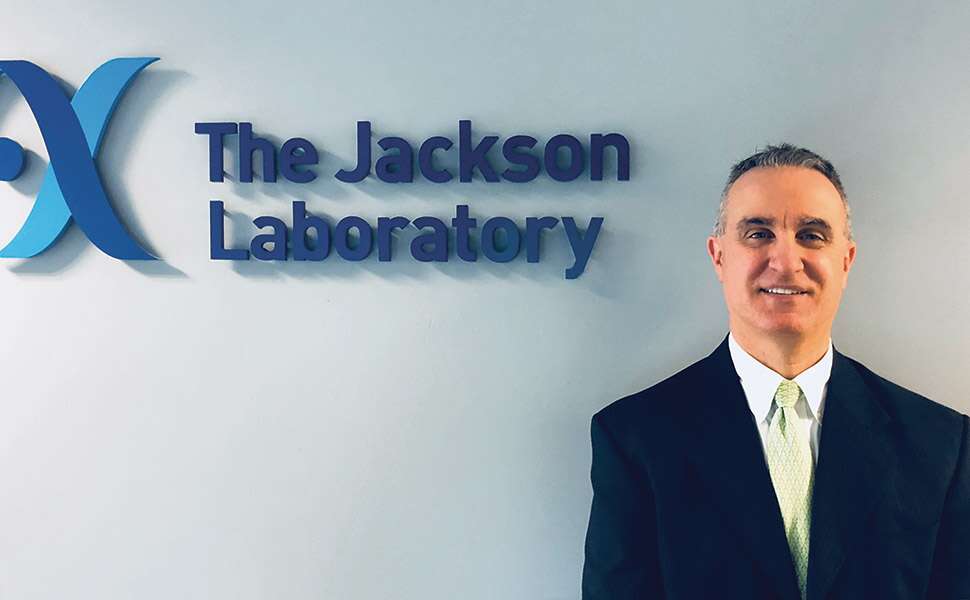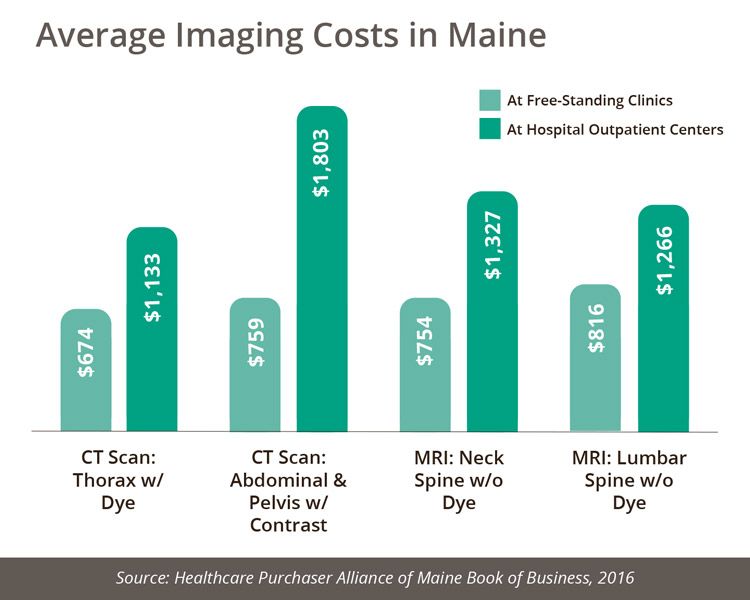
Processing Your Payment
Please do not leave this page until complete. This can take a few moments.
Healthcare Purchaser Alliance of Maine

A voice for business finds strength in numbers
For decades, the high cost of health care has spurred noisy, heated and sometimes confusing debate in Maine and throughout the United States. Often lost in the din are the businesses that foot the bill for much of the country’s health care.
At a time when the debate is only getting louder — and costs are reaching record highs — the Healthcare Purchaser Alliance of Maine is working to give the state’s employers a new voice.
Formerly known as the Maine Health Management Coalition, the nonprofit organization changed its name in March to reflect a sharpened focus: making quality health care more affordable for businesses and public trusts.

Price runs rampant
For 20 years, the price of health care has been growing. Right now, health care spending is rising 70% faster than the pace of inflation, as measured by the Consumer Price Index. And the disparity is only increasing, with the health care inflation rate expected to soon double the CPI’s.
As a result, health care costs are eating up more and more of every dollar in the economy. U.S. health care spending will total nearly $3.9 trillion in 2019, or roughly 18% of gross domestic product, according to the federal government. In less than a decade, that share is projected to reach 20%. Businesses will pick up much of the cost. In fact, consulting firm PwC predicts the country’s private employers will increase per-employee health care spending by 6% in 2019 alone.
All this leads to fewer dollars for vital public services, and fewer dollars for businesses to invest in employee wages and growth. The danger is acute in Maine, which already spends a lot on health care — the 11th-highest among the 50 states in per-resident spending, according to government data.
The cost crisis has prompted outcry in Maine and elsewhere from patients, consumer groups and politicians. But noticeably absent is the business community, which pays an estimated 20% of all U.S. health care expenditures. For most businesses, tackling the cost of health care means haggling annually over their insurance plan premiums, not addressing the root causes of the problem.
A collective voice
The Healthcare Purchaser Alliance does what none of Maine’s businesses can achieve alone: It leverages their collective voice and buying power to lower costs and drive improvement in quality, access and, ultimately, value.
“Until recently, there hasn’t been a place for the many voices of employers in Maine to coalesce,” says Peter Hayes, who in 2017 was named HPA president and chief executive officer, after working as a consultant and overseeing health benefits at Hannaford Supermarkets for 14 years. “We believe Maine’s health care purchasers can be — and need to be — market makers, not market takers.”
There’s strength in numbers, according to Hayes. More than 640,000 Mainers receive health insurance through their employers — roughly half the state population, and more than the numbers of Medicare and Medicaid recipients combined. What’s more, commercial purchasers of health insurance in effect subsidize these public programs, since employer-sponsored plans typically pay health care providers rates and fees that are four to six times higher than those of Medicare or Medicaid.
The HPA’s membership is comprised of over 50 employers, public trusts, health plans, hospitals, other providers and consumer groups. Ranging from Bowdoin College to The Jackson Laboratory (JAX) to Rising Tide Brewing Co., member-employers purchase health coverage for a quarter of the state’s commercially insured population. While the organization is for, and led by, purchasers, Hayes says Maine employers know the problems plaguing health care cannot be fixed by a single constituency. All HPA members have a vested interest in making the system more effective, safe and affordable.
Combating cost on many fronts
Members such as JAX often turn to the HPA as a resource for controlling their own health care costs.
“Now more than ever, employers of all sizes need to be the collective voice for their employees and families to ensure they have access to safe, high-quality and affordable health care,” says Tom Ellis, chief human resources officer at JAX and former chair of the alliance’s board of directors. “The alliance has been a critical resource to JAX and many other Maine employers. They support us with timely data and analytics that have a Maine lens and help us target effective strategies to improve the population health of our workforce, direct our employees to high-value care, and help influence providers to improve quality and ensure the affordability of health care in our Maine communities.”
In addition, the HPA is undertaking three initiatives to create more affordable health services for its members — and a more cost-efficient health care system for the state.
- Group drug purchasing. Among alliance members, prescription drugs account for roughly 20% of all health care spending, and a significant portion of that cost goes to middlemen that provide little value, according to the alliance. In response, it has created a group-purchasing program whose collective clout allows members to save over 10% on their drug spend. The program is operated by ProCare Rx, a pharmacy benefit manager that passes along 100% of rebates and other price savings to members — eliminating the hidden mark-ups other PBMs sometimes charge. And to participate, members don’t have to change the design of their health benefits or the formulary of covered medications offered to employees.
- Incentivizing high-value sites of care. For some forms of health care — especially “routine” services such as diagnostic imaging, lab work and infusion therapy — location is everything. The quality of care is consistently high, but where the service is delivered can make a huge difference in its cost. Some common CT scans, for example, range in average price from roughly $760 to $1,800 depending on where they are performed, with no correlation to the quality of the service. By studying insurance claim data, the HPA is working to identify the most cost-effective sites for such services. Beginning in 2019, alliance members will have access to a new shopping tool that allows them to provide stipends to incentivize their employees to choose high-value sites. Similar programs tested in markets such as New Hampshire showed that up to $5 can be saved for every $1 that’s paid out in incentives.
- Bundling payments and designating centers for excellence. Pricing can also vary dramatically for a lengthy course of therapy or a complex medical procedure. For example, the alliance’s examination of member data showed that the average cost of a knee replacement in Maine hospitals ranges from $30,000 to $50,000 — with little or no correlation to outcomes from the surgery. The difference is partly due to opaque reimbursement structures that reward providers for the volume of services rather than for the success of an entire episode of care. To move away from this volume-based payment approach, the HPA is working to create episode-based bundles of care that will be delivered at the highest quality centers of excellence in the U.S. Purchasers will be able to pay one upfront fee for all services associated with an episode of care, and will receive a warranty that covers readmissions if the patient requires additional services. By tying payment to the outcome of the procedure, this approach has been shown to lower costs, improve outcomes and enhance patients’ experience of care.
Change from the roots up

While work like this represents a change for the 25-year-old organization, it’s the result of a natural evolution, according to Hayes, who became active with the group during his Hannaford days.
As the Maine Health Management Coalition, it set out to improve the measurement and effectiveness of the health care system’s “Triple Aim” — better health across the population, higher quality care for the individual patient, and more affordable care for everyone. Much progress was made on the quality front, but costs continued to escalate, and in 2016 the coalition conducted an extensive self-evaluation to determine how it could be more effective. Focusing on affordability emerged as the clear priority. The coalition responded with bold action that included the new name and mission, a new purchaser-led governance structure, and new programs to incentivize high-value health care.
“I think what we’re doing is remaining true to our original tenets, but moving in a new direction that is more relevant and impactful today.” Hayes says. “Working collaboratively across stakeholder groups is important, but health care purchasers need an organization that’s devoted to them. We’ve never had that employer voice in Maine before.”
The new direction will create savings for Maine businesses and measurable change throughout the state’s health care system, says Lisa Nolan, the alliance’s director of value-based purchasing.
“Health care is such a complex system, it’s hard for an individual actor to have impact,” says Nolan, who has worked on health, workforce and budget policy at both the state and federal level for over 25 years. “But if you can give a single, integrated voice to those who are paying for health care, and really care about improving value, it’s actually possible to move the market.”


